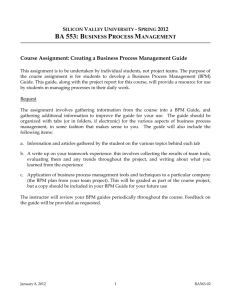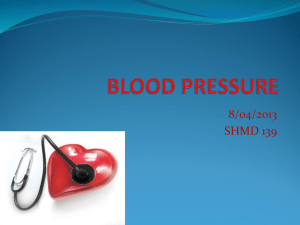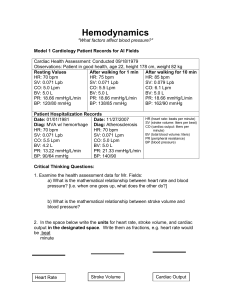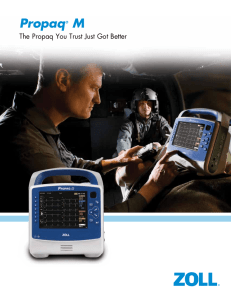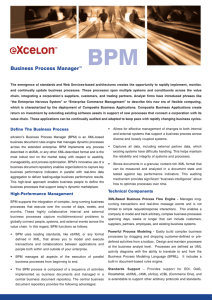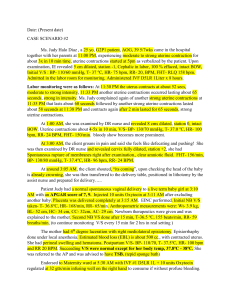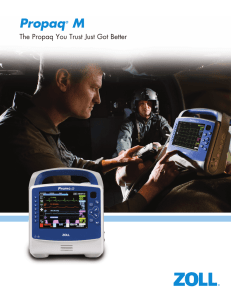Blood Pressure and Heart Rate
advertisement
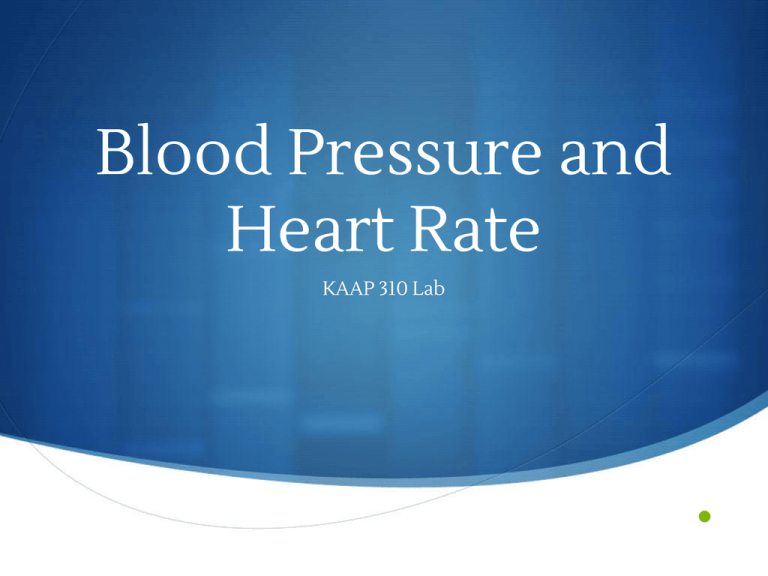
Blood Pressure and Heart Rate KAAP 310 Lab • Autorhythmiticity • The heart triggers its own contractions • Due to permeability to Potassium ions • Slow leakage of Sodium and Calcium Cardiac Action Potential Pacemakers • Primary: Sinoatrial node (SA node) (60-100 BPM) • • • Secondary: atrioventricular node (AV) (40-60 BPM) Tertiary: bundle of His (30-40 BPM) Last: Purkinje Fibers (under 30 BPM) Nervous System • Sympathetic: increases HR/BP • • Increases with inhalation Parasympathetic: decreases HR/BP • Increases with exhalation Measuring HR • Pointer and middle finger together • Use radial artery • Count beats starting at 0 for 15 seconds and multiply by 4 Heart rate ranges • Normal 60-100 BPM (unless endurance athlete) • Bradycardia: under 60 BPM • Tachycardia: over 100 BPM • Cardiac output= heart rate * stroke volume What is Blood Pressure? • Force exerted by blood on arterial walls during cardiac cycle • • • Systolic – force during contraction Diastolic – force during relaxation BP = Q x Total Peripheral Resistance (TPR) • • Amount of blood (Q) Resistance to flow (TPR) • Typically measured through brachial artery • Unit of measure is mmHg Blood Pressure Normative Values Category Systolic (mmHg) Diastolic (mmHg) Normotensive < 120 < 80 Pre-Hypertensive 120-139 80-89 Hypertension (Stage 1) 140-159 90-99 Hypertension (Stage 2) > 160 > 100 *According to American Heart Association (AHA) Measuring Blood Pressure • Antecubital region (elbow pit) • Stethoscope with ear pieces ‘forward’ • Drum turned ‘on’ • Arm is resting on table and at heart level • Inflate to pulse obliteration pressure • Deflate at 2-4 mmHg/second • Listen very carefully Lab activity • Get in groups • Follow steps and make sure each person gets a chance to take HR and BP • Homework • • BP questions due next week by start of lab (1 per group) Study Lesson 5 Introduction of Biopac (EKG) • • Short quiz to start class Bring Lesson 5 with you next week
